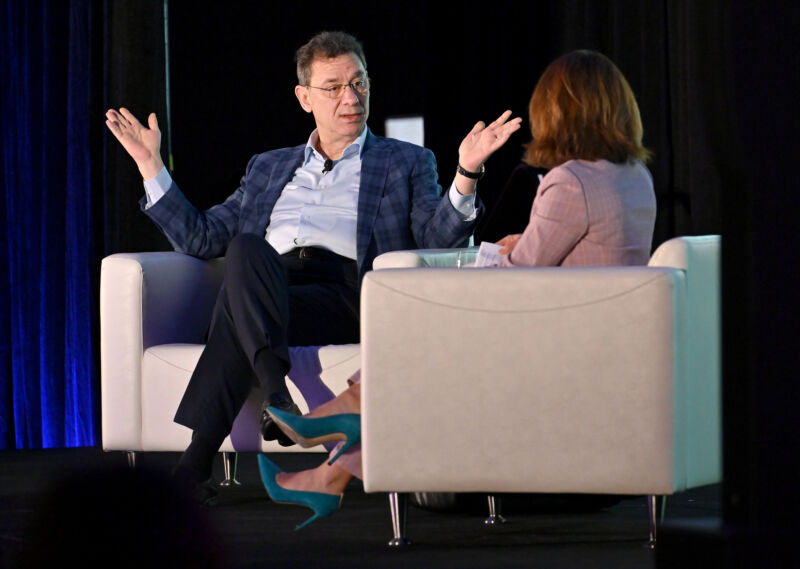While US health experts closely monitor upticks of COVID-19 cases in Europe as well as the global rise of the omicron subvariant BA.2, Pfizer is renewing calls for fourth doses of COVID-19 vaccine.
In an interview Sunday on CBS' Face the Nation, Pfizer CEO Albert Bourla said that a fourth dose—aka a second booster—is "necessary."
"The protection what we are getting from the third [doses], it is good enough—actually, quite good for hospitalizations and deaths," Dr. Bourla said. But, "it's not that good against infections" with omicron, and "it doesn't last very long." He reported that Pfizer is "working very diligently" to come up with a new dose that will protect against all variants and provide longer-lasting protection.
When the omicron coronavirus variant first emerged at the end of November and swiftly rose to global dominance, makers of mRNA COVID-19 vaccines—Pfizer and its partner BioNTech, as well as Moderna—all announced that they were working on omicron-specific vaccines. The companies initially said those shots could come as early as March. But as the omicron wave peaked and began a precipitous descent, so did the urgency for the shots. And last month, the vaccine makers announced slowdowns in development after several animal studies hinted that the variant-specific formulations didn't offer better protection against omicron than a booster of the current vaccines.
US health officials, meanwhile, have been more cautious about talk of a fourth dose. In January, the director of the Centers for Disease Control and Prevention, Rochelle Walensky, said that it was simply too soon to talk about fourth shots, given the slow uptake of third doses. "Right now, I think our strategy has to be to maximize the protection of the tens of millions of people who continue to be eligible for a third shot before we starting thinking about what a fourth shot would look like." To date, only 44 percent of fully vaccinated people in the US have gotten a booster dose, according to CDC data.
Potential for rise in cases
Still, consideration for fourth doses appears to be ramping up amid signs that the US could soon see another jump in COVID-19 cases. Though cases are still in decline from the initial omicron wave, many experts say there's a reasonable chance that cases could tick upward again—though not nearly to the extent of the initial omicron surge. Currently, much of the country is ditching pandemic prevention measures—such as masking and distancing—while protection from vaccines and boosters continues to wane, and an omicron subvariant is gaining ground in the US. The subvariant, dubbed BA.2, is thought to be 30 percent to 40 percent more transmissible than the original omicron, BA.1. It is currently accounting for around 12 percent of all US cases, and its prevalence has been steadily rising over recent weeks. This could all create a recipe for another, smaller surge in cases.
Right now, several countries in Europe, including the United Kingdom and Germany, are experiencing rising cases given the same situation—rising BA.2, loosening restrictions, and waning protection. The situation in the UK, in particular, tends to foreshadow what happens in the US by about three or four weeks, according to Scott Gottlieb, former Food and Drug Administration commissioner and Pfizer board member. In addition, about a third of national wastewater surveillance sites US are picking up early signs of increased transmission of COVID-19 from virus levels shed in people's feces.
But Dr. Gottlieb cautioned that BA.2 is still not expected to create a large surge, given all the immunity built up from vaccination and past infections.
"You're seeing an uptick across Europe, and I think that's causing a lot of anxiety here in the United States that we're going to see a surge of infection," Gottlieb said in an interview on CNBC's Squawk Box Monday. "I do believe we'll probably see a bump up of infections as we lift the mitigation [measures], as BA.2 starts to spread and become more prevalent... and as you get some waning immunity from the boosters that people got over the winter. But I don't think it's going to be another major surge of infection," he said.
Fall boosters
Instead, Gottlieb predicted that small increases in infections will quickly give way to declines. This is particularly likely as we head into the spring and summer months, when people spend more time outdoors where there's lower transmission risk.
But the new threat of case increases could refresh plans for a fourth dose. Officials have said in recent weeks that they are continually monitoring the need for fourth doses, potentially eyeing jabs in the fall, when people regularly get flu shots. According to reporting by The Wall Street Journal, the FDA has already begun reviewing data on fourth doses and Pfizer has said in recent days that it is close to submitting its own fourth-dose data to the regulator. The FDA is said to be looking at whether fourth shots will improve protection from infection and if they're needed by all vaccine-eligible people or just select groups that are at higher risk of disease.



3175x175(CURRENT).thumb.jpg.b05acc060982b36f5891ba728e6d953c.jpg)


Recommended Comments
Join the conversation
You can post now and register later. If you have an account, sign in now to post with your account.
Note: Your post will require moderator approval before it will be visible.